#prehistoric clothing
Explore tagged Tumblr posts
Text
World's Oldest Leather Shoe, from Armenia, c.3500 BCE: this prehistoric shoe dates back to about 5,500 years ago, making it the oldest leather shoe in the world
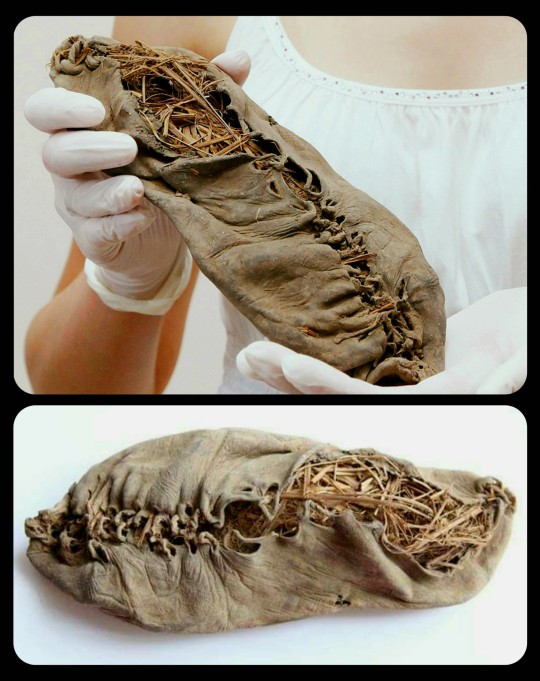
The shoe was found within a cave in the Vayots Dzor province of Armenia, where it had been preserved beneath a layer of sheep dung for more than five millennia.
From the BBC:
At 5,500 years old, the well preserved cow-hide shoe pre-dates Stonehenge by 400 years and the Pyramids of Giza by 1,000 years.
It was made of a single piece of leather and was shaped to fit the wearer's foot, researchers say.
The shoe contained grass, although the archaeologists are uncertain as to whether this was to keep the foot warm or to maintain the shape of the footwear.
Archaeologists put the shoe's remarkable preservation down to the stable, cool and dry conditions in the cave, and the fact that the floor of the cave was covered by a thick layer of sheep dung. This layer of excrement acted as a solid seal, preserving it over the millennia.
According to researchers, the shoe was deliberately buried in a clay-lined pit located within the cave system, though it's unclear why it was originally buried there. The evidence suggests that the shoe was more than just a ritual object -- an imprint of the wearer's big toe is still visible in the leather, and there is a significant amount of wear along the heel and ball of the foot.
This is the oldest leather shoe that has ever been discovered, but older shoes made of plant fiber have been found at sites in Missouri and Oregon. The oldest shoes ever discovered come from Oregon's Fort Rock Cave, where archaeologists unearthed dozens of sandals dating back to about 10,000 years ago.

Sandals from Fort Rock Cave, Oregon
Sources & More Info:
National Geographic: World's Oldest Leather Shoe Found--Stunningly Preserved
BBC: 'Oldest Leather Shoe' Discovered
The Bulletin: Viral Story about World's Oldest Shoes Failed to Mention Ancient Fort Rock Footwear
Oregon Encyclopedia: Fort Rock Sandals
#archaeology#history#artifact#anthropology#prehistoric#fashion#leather shoe#armenia#prehistoric clothing#preservation#crafting#leather work#ancient history#fort rock cave#oregon#prehistoric footwear#sandals#native american history#world's oldest shoes
120 notes
·
View notes
Text

Prehistoric Bone Weaving Comb, Kilmartin Museum, Kilmartin Glen, Argyll, Scotland
#ice age#bronze age#stone age#iron age#prehistoric#neolithic#prehistory#mesolithic#paleolithic#archaeology#bone comb#textiles#weaving#fabric making#ancient craft#Kilmartin Glen#Scotland#clothing#spinning#fabric#community#ancient living#trade
75 notes
·
View notes
Text
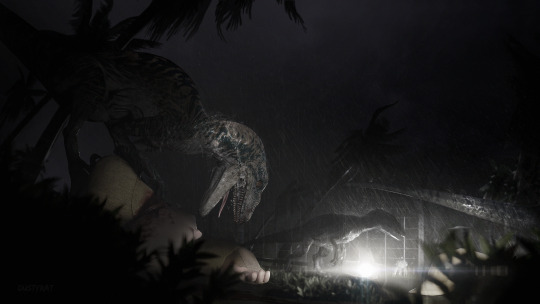
RAPTOR SQUAD
fullbody outfit (tail and body separately)
for large dogs
Echo, Blue, Delta, Charlie +26 swatches
all LODs | maps | no morphing
HQ compatible
Cats & Dogs DLC is required
Jurassic World: Evolution conversion | Commission | Full-sized 4k preview poster
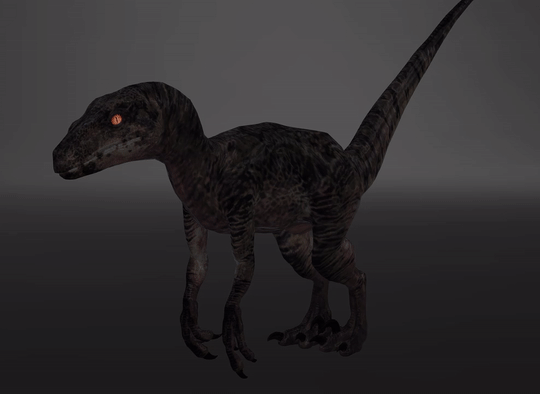
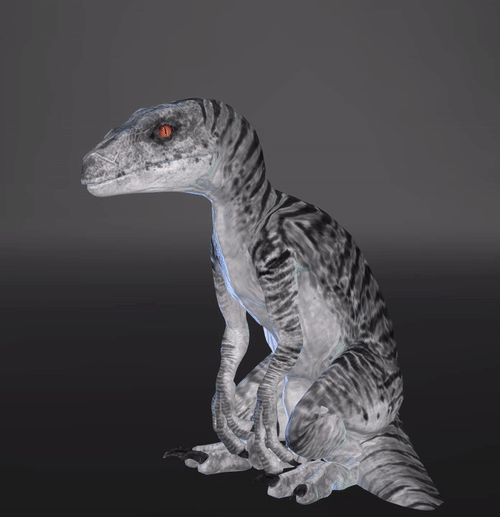
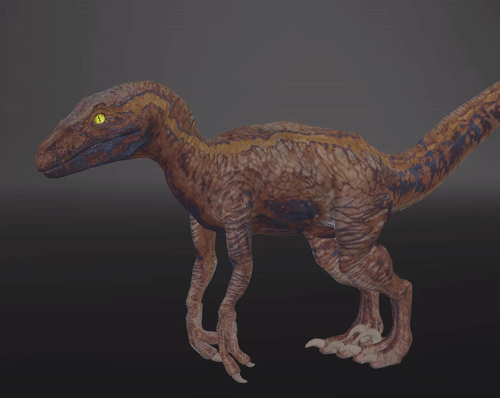

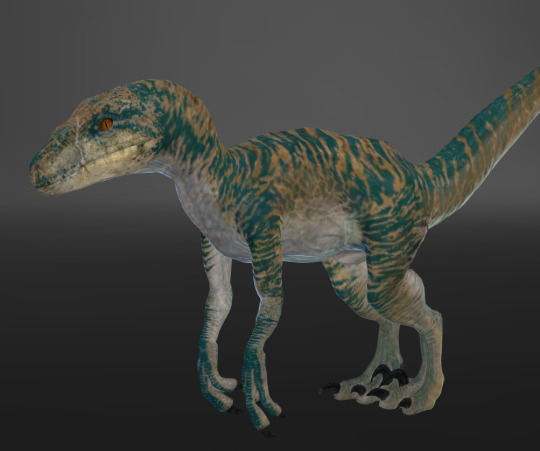
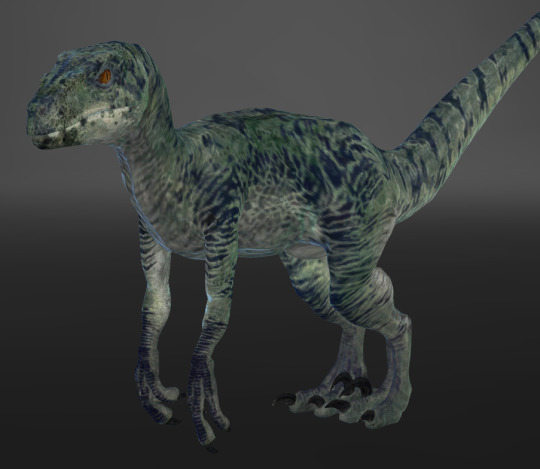
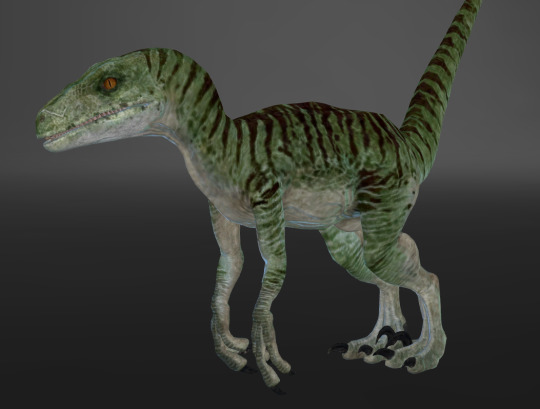


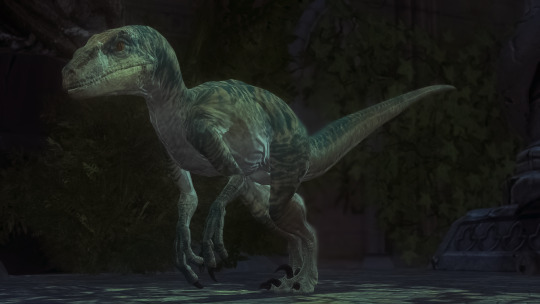
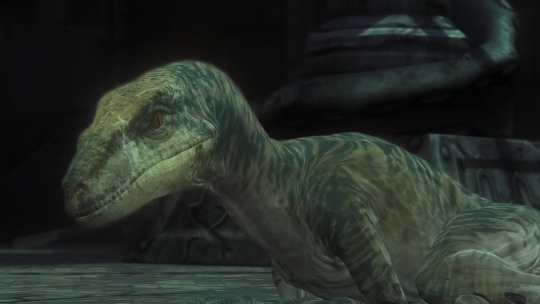


DOWNLOAD
SFS
(early access, public 03.05.2023 | MAR 05)
@sssvitlanz ❤
#ts4 pet clothing#sims 4 pets cc#sims 4 pets#ts4 pets#ts4 dog cc#ts4 large dog cc#sims 4 dinosaurs#ts4 fantasy#ts4 prehistoric#ts4 custom content
338 notes
·
View notes
Note
important questions

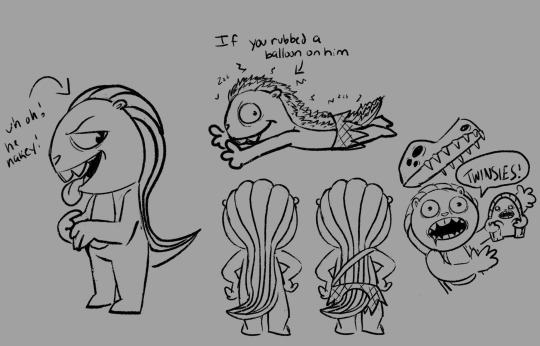
I drew a lil thing as fast as I could hehe
I call those things oh his back his “ridges”. They are just rows of hair that run down his back to the end of his tail. The hair on his ridges is a little bit longer than the rest of his fur. Not a mane, not dreads, not anything like that. It’s kind of similar to the band that runs down the back of a honey badger.

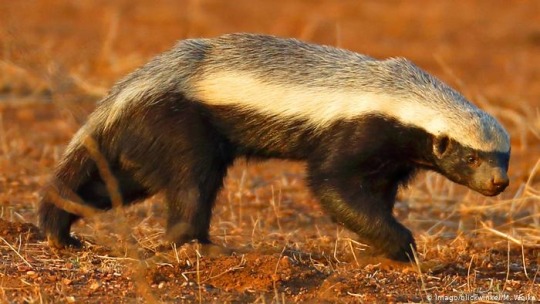
#htf#happy tree friends#htf oc#htf nergal#htf be brave#loretime#I think I’ve accidentally drawn his little skirt under the ridges before oops#but his clothing should go OVER it#you can’t put clothes under it or anything I just wasn’t thinking when I made those little mistakes#hopefully this clears it up!#no armor just a prehistoric mammal wearing a Dinoskin skirt/loincloth and a shoulder band for holding his weapons he used to use#oh and his skull hat he loves his skull hat#that was his very first kill ❤️❤️❤️
56 notes
·
View notes
Text

Custom jacket design I made for myself. I love prehistoric aquatic animals.
15 notes
·
View notes
Text


The tiktaalik screen
Trying to test our new materials and tequiques for my screen printing
#art#my artwork#screenprinting#shirt design#prehistoric#tiktaaliks#tiktaalik#prehistory#dinosaur clothes#nature clothes#devonian
7 notes
·
View notes
Text
Yesterday my mom said we were going on a cave tour but we ended up going to a Racism Museum and then driving a golf cart on long sidewalks for 5 minutes of looking down into a canyon (there was no going into a cave)
#thamkfully the tickets were free. johnny morris gave em to my mom as a gift#wish his billionaife ass would just pay her enough tho#the museum was fucking insulting to mative ppl amd only called them *ndians#they tried to cover their asses some by saying many of the 150-250 yo native clothing was 'gifted'#idk man....the war jackets of well known native chiefs???#i imagine that many of them wouldnt have willingly gave them to colonizers#not to mention that one of them had a fucking bloodstain on it but that could be from anything ig#there werent labels on every one of them#a lot of the stuff was just recreations#there were a bunch of pictures of native ppl painted by white ppl#lots of stuff about how white people 'improved their lives by bringing items to trade'#they mentioned how they slaughtered ghe bison population....for CLOTHES. no mention of native genocide#i liked seeing the old pictures and stuff. plus they had actual skeletons of prehistoric animals found in missouri#got to see the flag that covered lincoln's coffin & his hair & his wife's acfual clothes (they were v beautiful she had style)#seeing actual tools art and clothing made by natives was pretty cool but i dont trust the way the museum acquired them#like idc if they took shit from lincoln thats fine#i think the most insulting thing tho was a painting of christopher columbus greeting a group of native ppl#in elaborate clothing while the natives were naked and it said#'meeting the savages'#yeah. racism museum
7 notes
·
View notes
Text
Since people are sharing. Why not adding more :)

This is why I read the reddit comments
#stuff I research for one fanfic#not even smut just fanfics#stone age religion through Europe#copper age religion and cultural and societal development through Eurasia and Africa#Scandinavian and East Europe folklore#all the Celtic/ Greek/ Scandinavian/ Egyptian/ India/ China and Japan pantheon of gods from the Copper age to the first millennium#a comparative study of all the horned divine and spiritual creatures in human culture for a period of 5 millennia#the history of Ancient Roman expansionism#Babylonian and Canaan gods evolution through pre-historical period#Metallurgy technological history and its various technics through each culture#Prehistorical medicinal knowledge and herbs available at that time#shamanism and druidism because why not doing it as well#architectural and clothing fashion for a period of 6000 years focused on Celtic and also Chinese and Japanese culture#artisanal resource and art of war in Copper and Iron age#naming and languages evolution in pro-Celtic civilization#Hinduism genesis with all the exploits of Shiva#bloody Dashka story#Gaul tribes distribution#and the culture behind Xian people#All of it to simply put together the family a tree of a background character and ensure that 5 scenes in the ENTIRE story are accurate#And yes there are gays in it#but it is a 5000 years long story#it wouldn't be realistic if no gay weren't somehow involved in such a long period of time
124K notes
·
View notes
Text
Different Perspectives, Same Humanity: Embracing Diversity and Inclusion
"It's Ok To Be Different" is a powerful and empowering message that celebrates diversity and individuality. This phrase encourages people to embrace their unique qualities, perspectives, and experiences rather than conforming to societal norms or expectations.

Buy now:19.95$
Being different can manifest in various ways - from physical appearances and abilities to thought processes, cultural backgrounds, or personal choices. This concept recognizes that these differences are not flaws but rather valuable contributions to the rich tapestry of human experience.
Embracing this mindset fosters self-acceptance and boosts self-esteem, particularly for those who may feel marginalized or misunderstood. It challenges the notion of a singular "normal" and instead promotes a world where diverse voices and experiences are valued and respected.

Buy now
In practice, "It's Ok To Be Different" means:
Celebrating unique talents and perspectives
Respecting various cultural practices and beliefs
Acknowledging and accommodating different learning styles and abilities
Encouraging authenticity in self-expression
Promoting inclusivity in social, educational, and professional settings
This philosophy not only benefits individuals by allowing them to be true to themselves but also enriches society as a whole. It fosters innovation, creativity, and empathy by exposing people to diverse ideas and experiences.

Buy now
Ultimately, "It's Ok To Be Different" is a call for a more inclusive, understanding, and compassionate world where everyone feels valued for who they truly are.
A dinosaur gift is a perfect choice for enthusiasts of all ages, particularly those fascinated by prehistoric life. These gifts can range from educational to purely entertaining. Popular options include detailed figurines or models of various dinosaur species, allowing for hands-on exploration of these ancient creatures. Interactive dinosaur-themed books, especially those with pop-up features or augmented reality, can bring prehistoric worlds to life. For a more practical approach, consider dinosaur-themed clothing, backpacks, or room decor. Fossil kits or excavation sets provide an engaging, hands-on experience that mimics paleontological work. For tech-savvy recipients, dinosaur-themed video games or apps can offer both fun and learning. When choosing a dinosaur gift, consider the recipient's age, specific interests within paleontology, and whether they prefer educational or playful items.

Buy now
Adult autism gifts are thoughtfully selected items designed to support and enrich the lives of individuals on the autism spectrum. These gifts often focus on sensory needs, special interests, and practical aids for daily living. Popular options include noise-cancelling headphones for managing auditory sensitivities, weighted blankets for comfort and anxiety relief, and fidget toys for stress reduction and focus. Tech gadgets like tablets or smartwatches with organizational apps can assist with scheduling and communication. Special interest-related items, such as books, collectibles, or hobby kits, are often highly appreciated. Sensory-friendly clothing or accessories can provide comfort, while aromatherapy diffusers may help with relaxation. When choosing gifts, it's essential to consider the individual's specific preferences, sensitivities, and needs, as autism presents differently in each person.
#DINOSAUR Gift#Dinosaur Toys#Prehistoric Gifts#Dinosaur Models#Educational Dinosaur Gifts#Dinosaur Clothing#Dino-themed Gifts#Jurassic Gifts#Dinosaur Books#It’s Ok To Be Different#Embrace Diversity#Individuality Accepted#Unique Perspectives#Celebrate Uniqueness#Inclusivity Matters#Be Yourself#Diversity Appreciation#Adult Autism Gifts#Sensory-Friendly Gifts#Autism Support Products#Communication Aids#View all AUTISM GIFTS products: https://zizzlez.com/trending-topics/hobbies/autism-spectrum-awareness-month/#All products of the store: https://zizzlez.com/
0 notes
Text
WOW.
Scientists found an amazingly well-preserved village from 3,000 years ago
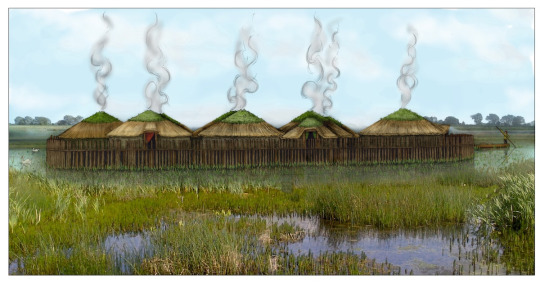

Text below, in case article access dries up:
LONDON — A half-eaten bowl of porridge complete with wooden spoon, communal rubbish bins, and a decorative necklace made with amber and glass beads are just a handful of the extraordinarily well-preserved remnants of a late Bronze Age hamlet unearthed in eastern England that’s been dubbed “Britain’s Pompeii” and a “time capsule” into village life almost 3,000 years ago.
The findings from the site, excavated in 2015 to 2016, are now the subject of two reports, complete with previously unseen photos, published this week by University of Cambridge archaeologists, who said they cast light onto the “cosy domesticity” of ancient settlement life.
“It might be the best prehistoric settlement that we’ve found in Britain,” Mark Knight, the excavation director and a co-author of the reports, said in an interviewThursday. “We took the roofs off and inside was pretty much the contents,” he said. “It’s so comprehensive and so coherent.”
The reason for the rare preservation: disaster.
The settlement, thought to have originally consisted of several large roundhouses made of wood and constructed on stilts above a slow-moving river, was engulfed by a fire less than a year after being built.
During the blaze, the buildings and much of their contents collapsed into a muddy river below that “cushioned the scorched remains where they fell,” the university said of the findings. This combination of charring from the fire and waterlogging led to “exceptional preservation,” the researchers found.
“Because of the nature of the settlement, that it was burned down and its abandonment unplanned, everything was captured,” Knight added.
“As we excavated it, there was that feeling that we were picking over someone else’s tragedy,” he said of the eerie site in the swampy fenland of East Anglia. “I don’t think we could smell the fire but the amount of ash around us — it felt close.”
Researchers said they eventually unearthed four large wooden roundhouses and an entranceway structure, but the original settlement was probably “twice as big.”
The site at Must Farm dates to about 850 B.C., eight centuries before Romans came to Britain. Archaeologists have been shocked at “just how clear the picture is” of late Bronze Age life based on the level of detail uncovered, Knight said.
The findings also showed that the communities lived “a way of life that was more sophisticated than we could have imagined,” Duncan Wilson, head of Historic England, the public body responsible for preserving England’s historic environment, said in a statement.
The findings unearthed include a stack of spears, possibly for hunting or defense; a decorative necklace “with beads from as far away as Denmark and Iran”; clothes of fine flax linen; and a female adult skull rendered smooth, “perhaps a memento of a lost loved one,” the research found.
The inhabitants’ diet was also rich and varied, including boar, pike and bream, along with wheat and barley.
A pottery bowl with the finger marks of its maker in the clay was also unearthed, researchers said, still containing its final meal — “a wheat-grain porridge mixed with animal fats” — with a wooden spatula resting inside the bowl.
“It appears the occupants saved their meat juices to use as toppings for porridge,” project archaeologist Chris Wakefield said in the university’s news release. “Chemical analyses of the bowls and jars showed traces of honey along with ruminant meats such as deer, suggesting these ingredients were combined to create a form of prehistoric honey-glazed venison,” he added.
Skulls of dogs — probably kept as pets and to help with hunting — were also uncovered, and the dogs’ fossilized feces showed they fed on scraps from their owners’ meals, the research found.
The buildings, some connected by walkways, may have had up to 60 people living there all together, Knight said, along with animals.
Although no intact sets of human remains were found at the site, indicating that the inhabitants probably fled the fire safely, several sheep bones were found burned indoors. “Skeletal remains showed the lambs were three to six months old, suggesting the settlement was destroyed sometime in late summer or early autumn,” according to the university’s news release.
Ceramic and wooden vessels including tiny cups, bowls and large storage jars were also found. Some pots were even designed to nest, stacked inside one another, Knight said — evidence of an interest in aesthetics as well as practicality.
A lot of similar items were found replicated in each home, Knight added, painting the picture of completely independent homesteads for each family unit rather than distinct buildings for shared tasks — much like we live today.
Household inventories often included metal tools, loom weights, sickles for crop harvesting, axes and even handheld razors for cutting hair.
The roundhouses — one of which had almost 50 square meters (nearly 540 square feet) of floor space — had hearths and insulated straw and clay roofs. Some featured activity zones for cooking, sleeping and working akin to modern-day rooms.
The Must Farm settlement has produced the largest collection of everyday Bronze Age artifacts ever discovered in the United Kingdom, according to Historic England, which partly funded the 1.1 million pound ($1.4 million) excavation project.
The public body labeled the site a “time capsule,” including almost 200 wooden artifacts, over 150 fiber and textile items, 128 pottery vessels and more than 90 pieces of metalwork. Some items will go on display at the nearby Peterborough Museum next month.
Archaeologists never found a “smoking gun” cause for the fire, Knight said. Instead, they suspect it was either an attack from “outside forces,” which may explain why the inhabitants never returned to collect their possessions from the debris, or an accidental blaze that spread rapidly across the tightly nestled homes.
“Probably all that was left was the people and what they were wearing; everything else was left behind,” Knight said of the fire.
But the preservation has left a window for people to look back through in the future. “You could almost see and smell their world,” he said.
“The only thing that was missing was the inhabitants,” Knight added. “And yet … I think they were there — you certainly got glimpses.”
4K notes
·
View notes
Video
tumblr
Wouldn't it be awesome to find that sign on the road?
#animation#clothing#crossing#dino#dinosaur#dinosaurs#freeway#highway#jurassic#ornithischia#prehistoric#roadtrip#sign#signs#stegosauria#stegosauridae#stegosaurus#street#streets#streetsign#streetsigns#streetstyle#streetwear#tees#teeshirt#teeshirts#tshirt#tshirtdesign#tshirtprinting#tshirts
1 note
·
View note
Text
10,000-Year-Old Sandals from Fort Rock Cave in Oregon (c.8000 BCE): these sandals are the oldest known footwear ever discovered

The oldest shoes in the world come from Oregon's Fort Rock Cave, where a team of archaeologists unearthed more than 70 sandals dating back to about 10,000 years ago. They had been buried beneath a layer of volcanic ash during the eruption of Mount Mazama in 7,600 BCE (the same eruption that produced Crater Lake). Some of the sandals still show signs of charring from the hot pumice that rained down over the site.
Each sandal is woven with ropes made of twisted sagebrush bark, and their design represents a distinctive stylistic tradition.

From the Oregon Encyclopedia:
While sandals have been found at sites other than Fort Rock Cave, no other site has produced the unusual quantity found at Fort Rock. They range from child-size to large adult size. Most are heavily worn or broken, which suggests that they were discarded rather than being stored for later use.
I briefly mentioned these sandals in my previous post, but I decided that it would be better to just give them their own separate, dedicated post instead, because they really are amazing.
Sources & More Info:
Oregon Encyclopedia: Fort Rock Sandals
Museum of Natural and Cultural History at the University of Oregon: Great Basin Sandals
Wikipedia: Fort Rock Cave
#archaeology#history#anthropology#artifact#prehistory#oregon#fort rock cave#crafting#prehistoric clothing#fashion#native american history#ancient history#world's oldest shoes
31 notes
·
View notes
Text

Iron Age Gold Torc And Costume Detailing, The British Museum, London
#ice age#stone age#bronze age#iron age#prehistoric#prehistory#neolithic#mesolithic#paleolithic#archaeology#gold#torc#jewellery#costumes#ancient cultures#ancient living#ancient clothing#ancient crafts#metalworking#metalwork#design
55 notes
·
View notes
Note
I feel like I've sent so many requests- lmk if it's too many or anything, I swear I'll stop
But until then, I have yet another!
How about a time traveller yandere who's darling is from a totally different period of time. Ex: Victorian era, prehistoric times, etc. Choose which ever you want!
-💌
Timeless Devotion
pairing: Yandere time traveller x Victorian era reader TW: yanderes, violence against others, notes : feelings were annihilated so bad i came out of my hiatus to write LOL
reblogs and comments are appreciated

♡ Yandere time traveller who expected nothing interesting when he decided to go to some obnoxious noble's ball, he wasn't this rich back in his time period, why not enough it now?
♡ Yandere time traveller who initially went out to the balcony to get some peace and quiet from the chattering crowd only to find you bent over the railing solemnly staring out to the garden.
♡ Yandere time traveller who immediately recognised you as the noble's child the moment you turned around to greet him. He who spent the next few hours of the ball getting to know you, hearing you lament of the fact your father married you off to a stranger.
♡ Yandere time traveller who started devising a plan to bring you back to his timeline the moment he saw tears falling down your face, he'd make sure everyone who played a part in forcing you to get married would be dealt with, of course, he doesn't waste the opportunity to let you sob into his chest.
♡ Yandere time traveller who begs you to run away with him, promising he'll take care of you to his best abilities, who promises that you'll never have to lift a finger if you wish so.
♡ Yandere time traveller who wastes no time in bring you back to his time, who's eternally grateful his parents decided to buy an old victorian house before they bailed on him
♡ Yandere time traveller who slowly introduces you to technology, who hands you a phone with only his number, who makes sure to hide the app store in case you decide to explore the contents of the phone.
♡ Yandere time traveller who knows damn well you hate the clothes in his time but buying victorian era clothing is just waay out of his budget so instead he take his time sewing clothes to your life, getting to place is hands all over you is a plus point.
♡ Yandere time traveller who always holds your waist when you go out to town, he's aware your dressing style makes you stand out but god forbid anyone tries to flirt with you, he'll get rid of them and keep you in the house for a while under the guise of it being too dangerous outside.
♡ Yandere time traveller who knows you spent your entire life being served so when he comes home to a burnt meal, hE doesn't complain, he eats it, praising you, asking you if you want to be taught more recipes.
♡ Yandere time traveller who panic when you uncover an old newspaper clipping of an unsolved murder of a noble house, snatching it out of your hand, telling you that even newspapers print lies these days.
#octo answers#octo writes#yandere x darling#yandere x reader#tw yandere#yandere#yandere scenarios#yandere imagines#yandere x willing reader#yandere x y/n#yandere x you#yandere headcanons#yandere imagine#yandere writing#yandere drabble
1K notes
·
View notes
Note
I miss our beloved scom family. How are they doing this fine day?
god, i miss them too. here's what they probably got up to today.

something blue 3.6k words | series masterlist warnings: y'all know the drill: being a mom.
Sarah leads Ellie, the way she always does, into the kitchen at seven a.m. sharp.
She stops by Joel first, squeezes into his size at the counter, and pushes onto her tiptoes. When he sidesteps to let her see (even though he point-blank refused to let you), she wraps two arms tight around her sister and hoists her up.
“Pancakes!” the three-year-old squeals, and loses her grip on her plastic dinosaur. He falls headfirst into the counter.
“Shh!” Sarah hisses, slinging Joel a disgruntled look. She sighs and swipes the T-Rex from his hand.
“The heck you lookin’ at me for?” he grumbles.
The girls eye you the entire walk over to the table. One as suspicious as the other. Sarah moves smooth, floats over to her spot with her chin skyward.
Ellie thumps at her heels, staring you down and almost stumbling into a chair.
“Careful, Nel,” you whisper, and her poker face cracks. You turn to Sarah. “I know it’s pancakes. It’s the only thing your dad ever figured out how not to burn.”
Joel’s shoulders jump. He swallows the laugh in his chest and says nothing.
Ellie sucks the chocolate clean from her dinosaur’s head. Last week, she decided his name was Bill. You, Joel, and Sarah are still trying to figure out where the hell she came up with it. Whoever he’s named after, she doesn’t like him much – not with the rate she lobs him around.
Kid’s an enigma. She suits it just fine.
She stares at you, still, as Sarah helps her up into her chair. Judders forward with each shove under the table. Comical, the two of them; like Pinky and the fucking Brain, you once told Joel – though you’re still not sure who’s who.
Your eyes drop to a stain on the toddler’s outfit. “You want me to wash that yet, Gagarin?”
She looks down. An arm swishes up to dab at the tangerine splotch. She grins, amused with herself, and shoves the dino back between her gums.
Sarah shakes her head. She turns back to you and flashes a trademark Joel frown. Eight years old and somehow, she manages to encapsulate the same fifty-six-year-old, unimpressed glower.
“Nel,” she turns, uttering between teeth, “You can’t wear dirty clothes today, remember?”
“I don’t think spacesuits are allowed at preschool,” you sigh as you push yourself up. “Much too sophisticated – huh, baby girl?”
Ellie giggles and flings her arms to the ceiling, sending Bill in a somersault across the table. She’s in nothing but pull-ups underneath the onesie – although it’s rare for her to ever be in much more than her pull-ups and, usually, one loose sock.
The suit means she’s feeling fancy. But what the fuck for?
All of Sarah’s leftover chaos, the magic she left in your veins after she was born, seems to have poured into her little sister. Smaller, mightier – more reckless, but not half as savvy.
Rarely seen without one of her prehistoric pals in her fist; evidence of what she had for lunch smeared around her lips. Chasing after Sarah, after Shimmer, after a butterfly that found itself trapped in her bedroom last month.
She scaled a chest of drawers trying to reach it. Joel caught her just in time. Some nights in bed, you can still feel his heart pounding from the scare she gave him.
Chalk and cheese. Sarah and Ellie. The former calm, composed. Candid and levelheaded, book smart and (alarmingly) wise beyond her years.
The latter – well.
It’s her first time on the planet, too, you try to remember.
You wander over to the washer, tossing the suit into the drum. You dig an elbow into Joel’s side and he flinches.
“Can I see yet?”
He turns, shielding whatever’s in front of him with a wide shoulder. “Not yet, baby. Not done.”
“You’re taking fuckin’ forever,” you mumble, pressing the words into his shoulder blade. From the corner of your eye, you watch the girls babbling to each other, scratching Shimmer between her floppy ears.
Joel twists, still hiding with his hands, and dots a tiny kiss on the tip of your nose. He smells like coffee and toothpaste. It still dizzies you every time he’s near enough for you to breathe it in.
“I’m almost done. Promise.”
You steal a kiss from his lips and smirk, stepping away. “Okay,” your eyes drift down to the counter, “If you say s…Alphabet sprinkles?”
His jaw slackens, moves like a bubbling fish. “Uh – they’re for – they’re for somethin’…Duck?” he clears his throat, “Tell your mom what they’re for, would ya?”
Sarah freezes. She stammers just like her dad. She does a lot just like him.
“A…a…a school project,” she says, and stares down at the dog.
“A – a – a school project?”
Your daughter nods. Still fixed on the smudges of sable around Shimmer’s eyes. “Bake sale.”
“You never told me about any bake sale,” you cross your arms, “What’d you make?”
She’s quick as lightning. “Cupcakes. But we haven’t made ‘em yet. Tonight, right, Dad?”
Joel’s voice is hoarse with panic. “Tonight,” he rasps.
You lean back against the counter, eyes shifting to the right. A different tactic. A rogue tactic, that’s for sure, but she has her moments. “…Nel?”
Your youngest looks up from her belly button.
“Not Nel,” Joel pleads, catching your eye for half a second.
“Why not Nel?”
His voice drops. “That kid would spill a state secret if you dangled a marshmallow in front of her.”
You tsk. “That’s mean. And wrong, anyways. The reason they have state secrets is ‘cause of kids like her. We should be proud, Miller.”
Ellie’s clutching the dinosaur when you look back over, chewing on his tail. She blinks back, and you wonder if there’s anything other than mastermind plans of mischief behind her eyes.
Joel says she has the same look in her eye that you do. Like you’re in on something the rest of the world has yet to catch up on. Twins, from the moment she stumbled ass over foot out of your body.
She talks just like you, and acts just like you, and – some nights, chatting sleepy gibberish under the slow turn of her rocket ship nightlight – you figure she must think just like you, too.
The perfect little riot.
Joel nudges you away, whispering, “Go on,” and you snicker, pushing off.
The sun combs through the room, glinting off cutlery and radiating from your daughters’ smiles. They chat and giggle and kick their feet; Sarah blows raspberries and Ellie sprays saliva all over the table when she tries to copy.
This is life, now.
You used to wake up to a silent house, sip your coffee and watch the oven clock count down the minutes until you had to leave for work.
You used to keep the radio on, even when you were out back – just to feel like someone was home with you. You used to sing to yourself as you flicked every light off at the end of the night.
Now, the laughter lives in the walls. It echoes even when you’re home alone. The oven clock counts down until there’s another pair of smaller hands in yours; until your man’s arms are back around your waist where they belong.
Come nightfall, you pluck odd socks and toy cars from under the couch. You tuck your children into bed, nuzzle your nose into their cheeks. You curl up beside Joel and trace shapes into his palm.
I love you, you write, some nights.
Dickhead, on others.
It takes a village, they all say. And sure, sometimes it does.
Sometimes, though, all it takes is two neighbors, a handshake deal, and a little bump named Duck.
“Woah, Nellie,” Joel chuckles, setting the first plate down. He clicks his teeth and taps a light knuckle on the girls’ hands, locked in a death grip. “Play nice. I got yours here, too, kiddo.”
Ellie straightens immediately. She watches, eyes fixed and glasslike, as her own breakfast is presented to her. And then she breaks into a wide grin, cheeks swelling. Her heels thud thud thud on the legs of her chair.
You lean over, cocking your head to see.
Two stacks of fluffy pancakes – a healthy dollop of chocolate spread on Sarah’s, and Ellie’s drizzled in golden syrup. Shards of strawberry and slices of banana scattered over the towers; blobs of whipped cream like clouds.
And on top of each, in clumsy sprinkle letters: Duckie and Nellie.
Sarah grins, two front teeth brand new and beautiful. She picks up her cutlery and raps them against the table, a nervous jitter about her.
You realize, just as her eyes flicker across yours, that she’s not beaming at her pancakes.
You realize, as he sways over to your side, that she’s beaming at him.
He’s holding two more plates. He sets his own down, a messy crater carved into the chocolate.
Your brows pull. “What happened –?”
“Bill happened,” he scoffs, shooting Ellie daggers.
She’s too busy tearing her stack apart, mixing a paste from syrup and cooked batter. There are few things the kid loves more than food and mess – and nothing she loves more than both at the same time.
She looks out of her mind happy, smothering the glossy mixture all over her cheeks, chewing in contentment.
“Like ‘em?” Joel asks, and you glance up.
“Yeah,” you laugh, eyes welling, “I love them. What’s the occasion, Miller?”
“Just…” his head wobbles as he considers it, “…we wanted to ask you somethin’.”
You turn to Sarah.
She’s still smiling, wider than you’ve ever seen. So bright that you worry she might shatter the glassware on the table.
“We?” you ask, smiling much the same.
She gives nothing away, and yet, at the same time – everything. Her knee bounces with excitement. Her breathing quickens.
“You wanna read yours?” Joel asks, tilting the plate in his hand.
You laugh, shaking your head. “No,” you sniff, “I’m scared.”
He lowers the plate.
The letters blur in and out of focus as you blink.
Red, green, yellow, pink. The second M is an upside-down W. The Rs lean into each other, chocolate pushing from the middle of the letters. A question mark crafted from a C and half of another letter.
Your lungs jump, though you knew it was coming. Though you’ve talked about it for months, now.
Let’s just get it outta the way, make it easier for the girls when we’re older. Few forms to fill out then it’s done. We don’t gotta make a big deal of it.
Can’t afford to make a big deal of it, anyway.
Wouldn’t want to make a big deal of it.
You’ve never been one for big deals.
This is a big deal. This is a big fucking deal, Joel.
All multicolored, flecks of whipped cream on them. Silly little alphabet letters.
Marry me?
Joel kneels as you swivel around to him. He kisses your cheek, takes your hands, rubs his thumbs across your knuckles.
“Look,” he says, voice trembling, “I know we said we wouldn’t make a big deal of it. But…you gotta let me make a big deal of it, honey. You gotta let me make a big deal of you.”
You laugh, tears spilling down the front of your shirt. Your heart is pounding, body alight with nerves or excitement or both, in one lightning bolt of feeling.
It’s everything you ever wanted, and nothing you ever expected.
“Everything I have –” Joel says, “– the kids, the house, the dog – I found it all with you. Because of you. I love you so much, and I can’t – I can’t take another minute that we’re not…”
His hands squeeze yours, and you swear you feel your pulses align. Beating together, two hearts on the same bassline.
He swipes the tears from your cheek, catches them in his palm. “…It don’t have to mean anything, I know that – but you, darlin’…you mean everything. What do you say we go do it?”
It’s the easiest thing in the world. And not just because you knew it was coming, knew to expect it soon enough.
Joel could’ve asked you the minute you found out you were pregnant with Sarah, and you reckon you would’ve said yes.
It’s easy. Loving him is so easy. Being with him is so fucking easy.
Coffee at sunrise, low volume TV in the bedroom. Skin and sheets, marks on your neck and chest and thighs. Laughter for breakfast, homework for dinner. Two bodies squeezing into one tiny shower cubicle, Joel’s hand over your mouth to muffle your giggles.
“Today,” you whisper, cupping his jaw. “I want to do it today.”
“Today?” his eyes flash over your shoulder to his daughters, “We gotta take the girls to –”
“No, we don’t,” your head shakes, “Do we have a marriage license?”
“Got it last week.”
“Then they come with. We get all dressed up, all four of us, and head down to the courthouse. We’re married by the end of the day.”
He laughs, loose and disbelieving. Shakes himself back into the room. “Today,” he repeats. “As in, right now?”
“Right now, baby.”
“Okay. Yeah, alright. Today.”
“Ask me.”
Joel’s cheeks lift. Tears disappear into his beard.
You lean forward, lining your forehead against his. “Ask me, Miller,” you whisper.
It’s no big deal. It’s a regular Wednesday. Packed lunches and dinosaurs with Nutella in their teeth.
It’s no big deal, but when he asks you, time stops.
“Will you marry me?”
“Fuck yeah, I will.”
Sarah takes forty-five minutes to apply your mascara, some powder, and a pink lip. She promises she’s being neat, and you tell her you don’t care – you’ll love it either way.
She says she knows, but she promises she is anyway.
Ellie curls up in your lap and twists your necklace around her fingers. She asks four times if her spacesuit is dry yet.
“Ellie,” Sarah warns – and you know it’s serious when she uses her sister’s real name – “You can’t wear a costume to a wedding.”
“Mama is!”
“No she ain’t! Brides are s’posed to wear white. Mama’s dress ain’t white. What you got on is fine,” she decides.
Ellie knows better than to keep arguing. She catches her heel in her hands, huffing. “Wanted to be an ass-traut.”
You catch Sarah’s eye. Don’t.
She bites her giggle.
“You are an astronaut,” you squeeze your toddler, “Our astronaut. Whether you’re in your spacesuit, or you got your big bare butt out for us all to see.”
She giggles into herself, a sound sweet enough to convince the sun to rise at dawn. Her baby teeth are small and wonky. She snorts, settles in your arms again, and watches Sarah lean in with the lipstick.
You lift your chin, holding steady. “Is Dad ready?”
She pauses, letting go of her breath. “He says he’s been ready the last half hour,” she mutters, and dabs more color on.
“Is he nervous?”
Her eyes lift. Eyelashes long and thick – black mascara that you made her pinkie swear she’d wipe clean the moment she gets home.
She smirks. It’s like looking in a mirror. “Are you?”
You press your lips together, blending the pink. “Little bit. You think that’s a good sign?”
“Mhm.”
Sarah straightens, capping the lipstick. She smiles at her masterpiece. “You look beautiful, Mama.”
“Well,” your chest fills, “I’m only beautiful ‘cause you made me that way, Duck.”
Joel’s voice sails upstairs and into the little pink room.
“Courthouse is closin’, sun’s almost down, they’re diggin’ my damn grave already. Are we good to go, or what?”
Sarah grins and leaps over an upturned toybox in the middle of her room. She pirouettes out to the landing, pursing and then smacking her lips together.
You fix Ellie’s skirt and lead her out after her sister. “’s go, Nellie.”
“Mama,” she tugs at the fabric, “I gotta…Need…need…”
“Shit,” you whisper, watching the ballerina twirl downstairs to her dad. “Uh…Duckie?”
“Hi, pretty Duck,” Joel calls, catching her in his arms. He spins her around and the skirt of her dress billows.
Her little heels click when he lets her down. She keeps on spinning, watching herself in the mirror.
“Baby?” Joel calls. “Y’all ready?”
“Nel’s gotta go!” you reply.
He scoffs. “She nervous or som’?”
“Or som’,” you sigh, walking the kid into the bathroom.
Ellie takes about as long as a three-year-old should, to be fair to her. It requires an amount of determination that right now, neither of you have the focus to lend it. Potty training doesn’t wait up, even for weddings.
Eventually, she announces with a triumphant shout that she’s done, Mama! – and claps her hands as the toilet flushes.
You carry her downstairs, heels clunking on the solid wood. At the bottom you set her free – and she sprints out to join her sister on the lawn.
The pair run circles around one another. They cartwheel on the grass; they race Shimmer and use the flowerbeds as hurdles. They dirty their dresses – ivory stained with bursts of green – though they look better that way, anyway.
They take turns playing Swingball with the only remaining racket (a mysterious disappearance that neither will own up to, and both are most certainly involved in). Sarah tells Ellie that she won – and the smaller girl throws her fists in the air and roars in victory.
Joel stands on the porch, hands in his pockets, watching. Even from behind, you can see the shape of his cheeks: he’s smiling. He crosses one foot over the other and taps his heel against the wood.
You emerge from the house slowly, quietly. “We didn’t get matching corsages this time,” you say, and he turns.
He starts, as though he glitches for a second. As though his world tilts on its axis, just from looking at you. His expression softens, his lips curve into a smile.
Then he breathes a laugh – a shaky thing, like he’s seventeen again, watching his homecoming date saunter over.
“That’s alright,” he replies, and slips a hand into his suit pocket. He fishes out two white tulips. “Remembered Alice dropped these off the other day. Here.”
Delicately, lighter than the breeze, he tucks the flower behind your ear. He steps back to admire his work, just like his daughter did.
All the best parts of you, you reckon, are the parts that are loved by them.
“How do I look?” you ask.
Joel sucks in a shattered breath. “Beautiful,” he chokes, like it’s all his voice will allow. He sniffs, drags his knuckles across the bottom of his nose, and says, “You ain’t never looked more beautiful.”
“Your turn.”
You take the second tulip from his fingers and drop it into his breast pocket, turning it until it looks perfect. “There,” you pat his chest, “Now we both look beautiful.”
He steps forward, dipping his head to kiss you. Arms around your waist, hands splayed on your back. He laughs against your lips. “Don’t think I don’t know what this is,” he mumbles, tugging at the pale material.
“It still fits!” you say, running a palm down the smooth silk. Flashes of light, a squealing guitar, heated kisses and a thudding bassline. It spins past your eyes as he leans in again.
He tastes the same. Less alcohol, sure – but that same, sweet-as-honey, instantly intoxicating taste. Like you were a goner before you even hit the mattress.
You look back up, and Joel’s eyes are on yours.
“After two kids, it still fits,” you whisper.
“Hm,” he muses, glancing down. His hands slip around your ass. “Looks even better than it did then, Mama.”
You laugh against his lips. “It’s my something blue.”
“Oh, yeah?” He lifts an eyebrow. “What else you got?”
“Well, something borrowed –” you hold your left hand up, a plastic ring glinting in the sunlight, “– Duck gave me some of her finest jewelry. Something new –” you wiggle your earlobe, “– Mother’s Day earrings, and…something old…”
Joel tilts his head. His expression tightens, tightens, tightens – until he understands. He clicks his teeth and steps back. “Funny. You’re so funny, I ever tell you that?”
You giggle, letting him drag you across the porch. “I’m just bein’ realistic, man. What else do I got that’s as old as you?”
He ignores you. It makes you laugh even harder.
It always did.
The wind surfs through silk, lifting your skirt as you stride over the driveway. Your hands stay interlocked – and you know that, secretly, Joel’s as nervous as you.
He whistles and his daughters look up.
“Serena, Venus,” he calls, nodding to the truck. “Get in.”
They skip over. Sarah takes her dad’s hand – the picture of royalty as he aids her up into the backseat – and Ellie swings into your arms.
You strap them in, point fingers to warn them not to bicker, and climb in the front.
The doors slam closed and you exhale slowly. Two kids aren’t any more complicated than one – especially in yours and Joel’s case – but holy shit, they’re tiring.
They compare dresses in the backseat. What color is yours, Duck? Pink, Nel. Is mine’s pink, Duck? Yours is yellow, Nel.
Joel’s hand slips around your knee. He smiles. Gives your leg a little squeeze. He flicks the radio on, and an Eagles track sways through the cabin. He fixes the tulip in your hair, peppers kisses along your wrist.
His voice is as soft as Henley’s, when he asks –
“Wanna go to a wedding?”
#something of a love letter to ellie williams ig#chats#anon#fic: sweet child o' mine#joel miller ficlet#joel miller#joel miller x reader
408 notes
·
View notes
Text
Word List: Grave

beautiful words with "grave" for your next poem/story
Gravecloth - sudarium, i.e., a linen square carried by the upper classes in Roman times (as for wiping perspiration from the face); handkerchief; an image of the face of Christ painted on a cloth and used as an aid to devotion
Graveclothes - the clothes in which a dead person is buried
Gravedo - archaic: cold in the head
Graveless - not buried; not requiring graves; deathless
Gravelrash - abrasion of the skin by gravel or other rough surface
Gravelroot - marsh milkweed; horse balm
Gravelweed - an American herb (Verbesina helianthoides); bush honeysuckle
Graveolence - obsolete: a strong and offensive smell
Graveside - the area beside a grave
Gravestone - a burial monument
Gravette - a small sharp prehistoric flint tool consisting of a blade like that of a knife with a very sharp point, a straight back, and a groove following one entire margin
Graveward - toward or directed toward the grave
Ingravescence - the state of becoming progressively more severe
Intergrave - to grave or carve between; engrave in alternate parts
Ungrave - to dig up; disinter
If any of these words inspire your writing, do tag me or send me a link. I'd love to read your work!
More: Word Lists
#word list#grave#writing reference#spilled ink#dark academia#writeblr#langblr#words#linguistics#light academia#writing inspiration#writing ideas#creative writing#literature#writers on tumblr#writing prompt#poets on tumblr#poetry#jacob van ruisdael#writing resources
147 notes
·
View notes